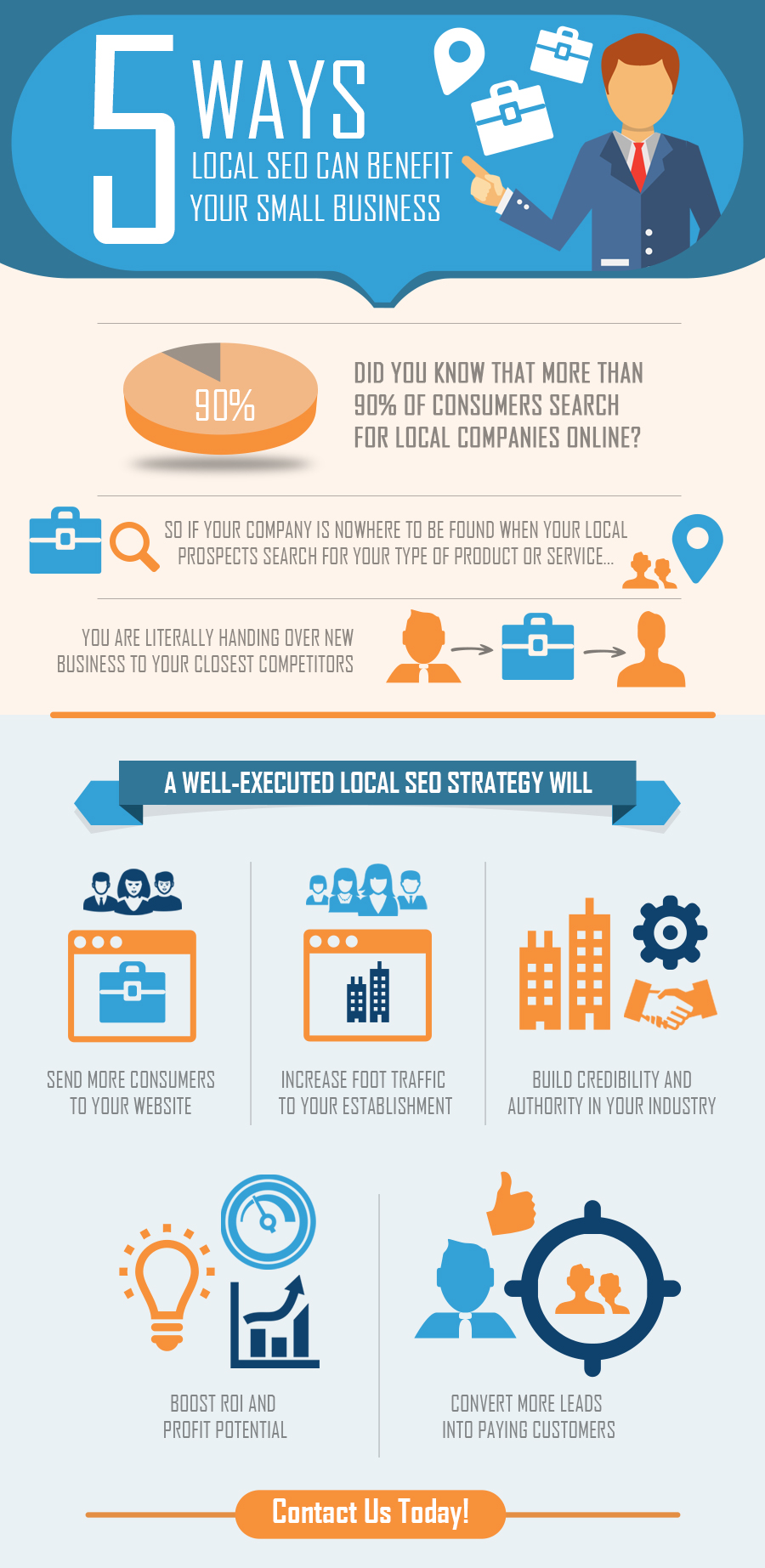Local business owners are busy people – you know that already. In a single day, you could be acting as an HR manager, marketing guru, IT expert, and cashier. That’s a lot for any one person to do.
For that reason, SEO can sometimes take a back seat. It’s understandable. When you’re the one doing nearly everything, you might be tempted to set SEO aside – especially if it seems like it’s not a money-making endeavour.
But it is.

The truth is that you might be making critical SEO mistakes right now that are driving customers away from your business instead of attracting them.
The good news is? There are just 5 common mistakes and they’re all easily fixable. They’ll take a bit of time, of course, but it’s nothing you can’t handle. Here’s what you need to know.
SEO Mistake #1: Not Optimising Your Google My Business Page
The most important thing to know about Google My Business is that it’s owned by – you guessed it – Google. That automatically makes it important for SEO.
If you haven’t already claimed and optimised your Google My Business page, here’s what you need to do:
- Click here to claim your page
- Provide all information that Google asks for, including your business address, phone number, URL, social links, map, hours, menu, and prices.
- Use your most important local keywords in your descriptions.
- Add pictures and relevant images to your listing.
- Check your listing regularly since customers can edit it.
Once you’ve done these things, you should also plan on making Google My Business posts to promote your business.
SEO Mistake #2: Not Optimising Your Website for Mobile Users
Mobile search is everything when it comes to local SEO. In fact, as of 2018, 95% of ALL mobile searches happened on Google. That’s not a number you can ignore.
Here are some of the key things to improve to optimize your site for mobile:
- Improve your page’s loading time. As of 2018, the average mobile site took 22 seconds to load – but the optimal loading time for conversions is about 2.4 seconds!
- Do mobile user testing and make sure that your menus and buttons are easy to navigate on mobile.
- Make sure your content doesn’t require horizontal scrolling (or squinting) to be read on a mobile device.
- Make sure common actions and requests are easy for mobile users. In other words, make it easy for them to find directions to your store, view your prices, subscribe to your list, make a purchase, or follow you on social media.
On a related note, you should also think about mobile advertising. For example, Facebook has a “Call Now” button as an option for mobile ads.

SEO Mistake #3: Not Optimising for Voice Search
Voice search is arguably the biggest trend in SEO. The increasing popularity of virtual assistants such as Siri, Alexa, and Cortana is driving the trend. As of 2019, 20% of all online searches were voice searches and that number’s expected to skyrocket to 50% by 2020.
Fortunately, optimising for voice search isn’t difficult. Since people use voice search in specific ways – asking Siri a question, for example – you’ll need to think about the questions and problems that drive most customers to your website.
Here are some pointers:
- Answer common questions. Make a list of the questions that people are most likely to ask about your products or services and answer them on your site. Use the questions themselves as keywords.
- Focus on long-tail keywords. Questions are great, but so are keywords that include words like:
- How to
- Where
- New
- Best
- Top-rated
- Incorporate local keywords. Most voice searches are local, and you don’t want to miss out on searches that include the name of your city or the words “near me”
- Make sure your site loads quickly. Mobile users have a bounce rate 10% higher than desktop users – and most voice searches are mobile.
Rethinking your content with voice search in mind is a great way to attract more customers.
SEO Mistake #4: Not Removing Broken Links (insert 404)
You already know that link-building is crucial for SEO. Both internal and external links are a must, and if you’ve got broken links, it can hurt your SEO over time.
Broken internal links are frustrating for users – and they can occur when you change the URL of a page or remove content from your site. Broken external links are also frustrating and can even hurt your Google rank.
If it’s been a while since you looked for broken links on your site, you might be losing customers without realizing it. You can try going through your site and checking each link individually – but if you’ve got a complex site with a lot of pages, that can take a long time.
Instead, consider using a broken link tool like this one to help you out. It will test your site, identify broken links, and make it easy for you to fix them.
SEO Mistake #5: Not Focusing on Reviews
86% of all consumers read online reviews before making a purchase – and most read 10 reviews or more. Do you need anything else to convince you that online reviews are important for SEO?
If you’ve been neglecting your online reviews, it’s time to take them seriously. Having current reviews can make or break a local business.
Here are some pointers for getting your online reviews taken care of:
- Claim your business listings on Google My Business (see above), Yelp, and other review sites.
- Check your information to make sure it’s accurate.
- Ask customers to review your business. If you’ve got regulars, you can simply ask them to leave a review. Link to your Yelp or Google My Business page on your website and print the URLs on your receipts.
- Ask your Facebook followers to review your business on Facebook.
- Designate a person to handle reviews, including responding to negative and positive reviews quickly.
You can also seek out people who leave detailed or inspiring reviews and ask them to write or film a testimonial for your business. Then, you can feature it on your website or social media.
SEO is constantly changing, but the 5 mistakes here are ones you simply can’t afford to make. Fixing them now can help you avoid missing out new customers.

